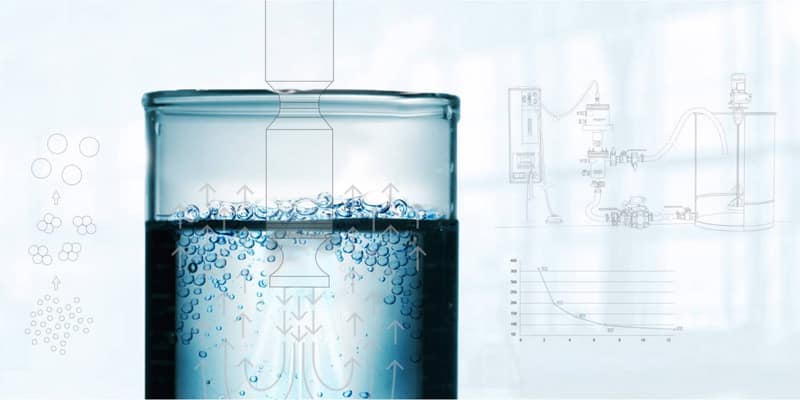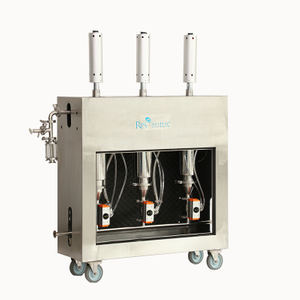What is Ultrasonic Tea Extraction Technology?
This technology is a revolutionary innovation in the field of deep tea processing, changing the way we extract the essential components of tea.
Core Concept: What is Ultrasonic Jam Sterilization Technology?
Ultrasonic jam sterilization technology, also known as ultrasonic-assisted sterilization or acoustic cavitation sterilization, utilizes high-intensity, low-frequency ultrasound (typically in the range of 20kHz-100kHz) to generate strong physical and chemical effects in liquid media (such as jam), thereby destroying the structure of microorganisms (such as bacteria, yeast, and mold), achieving sterilization or significantly reducing the number of microorganisms.
It is often combined with gentle heating (50°C-60°C) or moderate pressurization to create a synergistic effect, greatly improving sterilization efficiency.
Working Principle: Acoustic Cavitation Effect
The core of this technology is the acoustic cavitation effect. The entire process can be broken down into the following steps:
Ultrasonic Injection: High-intensity ultrasound is transmitted into the jam through a transducer.
Cavitation Bubble Formation: Ultrasonic waves are longitudinal waves with alternating compressions and rarefactions. In the negative pressure phase (rare phase), the liquid is stretched, and the existing tiny gas nuclei (cavitation nuclei) inside rapidly expand, forming tiny bubbles.
Cavitation bubble collapse: In the immediately following positive pressure phase (compression phase), these newly expanded bubbles are rapidly compressed and implode within an extremely short time (microseconds or even nanoseconds), collapsing and disintegrating.
Energy release: This implosion process creates extremely extreme local environments:
Ultrasonic tea extraction technology, also known as ultrasound-assisted extraction, is a technique that uses the physical energy of ultrasound (typically 20kHz-100kHz) to accelerate and improve the dissolution process of effective components in tea (such as tea polyphenols, catechins, caffeine, tea polysaccharides, amino acids, etc.).
Its core principle is the cavitation effect of ultrasound.
Cavitation effect: When ultrasound propagates in a liquid medium (such as water or ethanol), it generates countless tiny bubbles (cavitation bubbles). These bubbles rapidly form, grow, and then violently collapse under the influence of sound pressure, generating extreme high temperatures (approximately 5000K), high pressures (approximately 1000 atmospheres), and strong shock waves locally.
Effect on tea cells: This enormous energy can instantly break down the cell walls of tea leaves, directly exposing the effective components inside to the solvent, thereby greatly improving the dissolution rate and efficiency of the components.
Comparison with traditional extraction methods
Characteristics: | Ultrasonic extraction technology | Traditional hot extraction method |
Principle | hysical cavitation effect breaks the cell wall | Utilizes heating and concentration difference diffusion |
Efficiency | High, time reduced by 50%-90% | Low, with a long duration (several hours) |
Temperature | Low or normal temperature to avoid damage to heat-sensitive components | High temperatures may cause some components to oxidize and decompose. |
Yield | High, extraction more thorough | relatively low |
Energy consumption | Low (due to short time and low temperature) | Higher (due to prolonged heating) |
Solvent usage | Less | more |
Product quality | Components more complete, higher activity, better color and flavor | It may result in loss of flavor and activity due to high temperature. |
Environmental friendliness | More environmentally friendly (less solvent, lower energy consumption) | Relatively worse compared to the latter |
III. Technological Advantages
High Efficiency and Speed: Reduces the extraction process from several hours to tens of minutes or even just a few minutes.
Increased Yield: Cell wall disruption allows for more thorough release of internal components, significantly increasing the yield of active ingredients.
Low-Temperature Preservation: Avoids the damage to heat-sensitive substances in tea leaves (such as some vitamins, aroma components, and antioxidants) caused by high temperatures, better preserving the natural activity and flavor of the tea.
Energy Saving and Environmental Protection: Short extraction time and low temperature result in low overall energy consumption and less solvent usage, better meeting the requirements of green production.
Good Selectivity: By adjusting ultrasonic parameters (power, time, frequency) and solvent, selective extraction of specific target components (such as caffeine or tea polyphenols) can be achieved.
IV. Main Application Areas
This technology is mainly used in the deep processing industry of tea to produce high-value-added tea extracts.
Instant Tea Powder Production: Highly efficient extraction of tea essence, followed by spray drying to produce instant tea powder, widely used in tea beverages, solid milk tea, etc. Functional Component Extraction:
Tea Polyphenols/Catechins: As natural antioxidants and raw materials for health supplements.
Caffeine: Used in pharmaceuticals and functional beverages.
Tea Polysaccharides: Used in functional foods such as those for lowering blood sugar.
Theanine: Used in health supplements for relieving stress and improving sleep.
Freshly Blended Tea Industry: Used for the rapid preparation of high-concentration tea bases, ensuring stable product flavor and efficient brewing.
Cosmetics Industry: Extracting antioxidants from tea leaves for use in skincare products.
New Tea Product Development: For example, creating cold-brewed tea concentrates with better flavor and nutrient retention.
VI. Future Development Trends
Combined with Other Technologies:
Ultrasonic-Microwave Co-extraction: Combining the rapid heating of microwaves with the cavitation effect of ultrasound for higher efficiency.
Ultrasonic-Enzyme-Assisted Extraction: First, ultrasound disrupts cell structure, then enzymes are used for specific decomposition, improving the yield and purity of target components.
Intelligent and Automated Processing: Real-time monitoring of the extraction process through sensors and AI models, automatically adjusting parameters to achieve precise control and optimal quality.
Targeting the end-consumer market: With technological advancements and cost reductions, miniaturized, home-use ultrasonic tea-drinking devices may emerge in the future, allowing consumers to experience the convenience and quality brought by this technology.
In summary, ultrasonic tea extraction technology is a highly promising green, efficient, and high-quality extraction technology. It is not only a key tool for upgrading the deep processing industry of tea, but also opens up new avenues for developing higher-quality and more functional tea products. As the technology matures and costs decrease, it will be applied in a wider range of fields, profoundly impacting the entire tea industry.


 English
English














